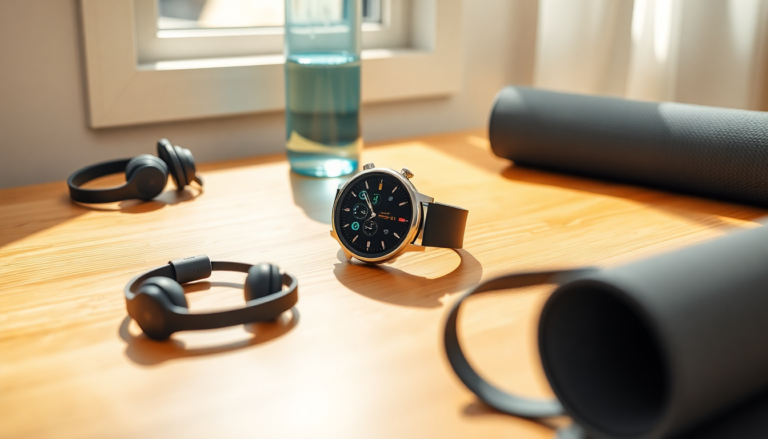Argomenti trattati
The Amazfit Bip 6 has made its mark in the crowded world of budget smartwatches, delivering impressive specifications without breaking the bank. This model represents a significant leap forward from its predecessors, designed to elevate user experience in the ever-expanding realm of wearable technology. With its cutting-edge features and wallet-friendly price tag, the Amazfit Bip 6 aims to capture the attention of both fitness buffs and casual users alike.
Key Features and Design
First impressions matter, and the Bip 6 doesn’t disappoint with its vibrant 1.97-inch AMOLED display. With a resolution of 390 x 450 pixels and a peak brightness of up to 2000 nits, visibility is top-notch, even under scorching sunlight. A standout feature for this price range is the automatic brightness sensor, which tweaks the screen brightness according to the ambient light. Plus, the display is shielded by slightly curved tempered glass, which adds an extra layer of scratch resistance.
But what’s powering this impressive display? Under the hood, the Amazfit Bip 6 is fitted with the BioTracker PPG sensor, allowing for heart rate and blood oxygen (SpO₂) monitoring. While it utilizes an earlier version compared to the PPG 6.0 found in the Amazfit Active 2, it still maintains reliable tracking capabilities. Additional sensors, such as an accelerometer, gyroscope, ambient light sensor, and geomagnetic sensor, only bolster its functionality. The smartwatch supports Bluetooth 5.2 and is compatible with five satellite positioning systems for precise GPS tracking, although it notably lacks Wi-Fi and NFC features common in higher-end models.
Battery Life and Water Resistance
When it comes to battery life, the Amazfit Bip 6 is a powerhouse. Its 340 mAh battery promises an impressive lifespan ranging from 10 to 15 days, depending on usage. With a water resistance rating of 5 ATM, it’s also suitable for swimming, making it an attractive choice for fitness enthusiasts. Priced at just €79.90, it’s positioned as a compelling option for budget-conscious buyers.
The design sticks to what fans love about the Bip series, featuring a rectangular shape with rounded corners and available in five attractive colors. On the right side, you’ll find two buttons: the upper one takes you to the main menu, while the lower one lets you kick off sports activities with ease. Plus, microphones on the right and a speaker on the left enhance the device’s functionality for calls and notifications.
User Interface and Fitness Tracking
Now, let’s talk about the user interface. While it may not be the most intuitive out there, it offers extensive customization through the Zepp application. You can manage watch faces, notifications, and workout metrics to suit your preferences. Admittedly, some elements, like font size and notification scrolling, may take a bit of getting used to, but overall, the experience is quite satisfactory.
One of the standout features of the Bip 6 is its remarkable battery longevity. It can last over a week even under heavy use, which includes GPS workouts and heart rate monitoring. With more conservative settings, you could even approach the manufacturer’s claim of a two-week battery life. Charging is a breeze, taking about two hours, but note that the included accessories only consist of a magnetic base—no USB-C cable here.
As a fitness companion, the Bip 6 does not disappoint. It supports a variety of sports activities and provides detailed metrics for each. During runs, users can track pace, real-time heart rate, and distance traveled. Even though GPS signal acquisition might take up to 40 seconds in cold conditions, the tracking accuracy is commendable, even without a connected smartphone.
Health Monitoring and Smart Features
When it comes to health monitoring, the heart rate detection is fairly accurate, though it may register slightly higher than premium devices like the Garmin Venu 2 Plus. The Bip 6 also supports indoor workout tracking, including treadmill exercises (with customizable speed and incline) and weight training with repetition counting—a very handy feature for gym-goers.
Its health and wellness capabilities are impressive as well, offering in-depth sleep analysis (covering light, deep, REM, and awakenings) alongside nocturnal heart rate tracking. Additionally, it features blood oxygen monitoring (SpO₂) and menstrual cycle tracking—pretty comprehensive for a budget smartwatch.
Smart features further enhance the user experience, allowing you to make and receive calls directly from your wrist when connected to your smartphone via Bluetooth. The device offers various messaging response options, including an on-screen keyboard, voice dictation, emojis, predefined phrases, and even the Zepp Flow voice assistant, which can suggest contextual replies. Notifications can be managed through the Zepp app, centralizing everything you need.
The Zepp application, compatible with both iOS and Android, acts as your command center for smartwatch management and data analysis. It allows you to customize notifications, download new watch faces, and analyze sports activities in detail. However, navigating advanced metrics can be a bit confusing without proper context. Additional features include an AI-based food diary that estimates calories and nutritional information from photographs and the ability to upload loyalty cards.
Conclusion
In summary, the Amazfit Bip 6 truly stands out as a surprisingly comprehensive smartwatch for its price. With a bright and spacious AMOLED display featuring an automatic brightness sensor, and a battery life that can last over a week—even with heavy usage—it offers considerable advantages over pricier competitors. While it shares both strengths and weaknesses with its higher-end sibling, the Amazfit Active 2, it is a solid choice for those who prefer its squared design. However, if aesthetics aren’t a decisive factor, the Active 2 may justify the additional €20 for its superior build quality and enhanced hardware and software features. So, which one fits your lifestyle better?

